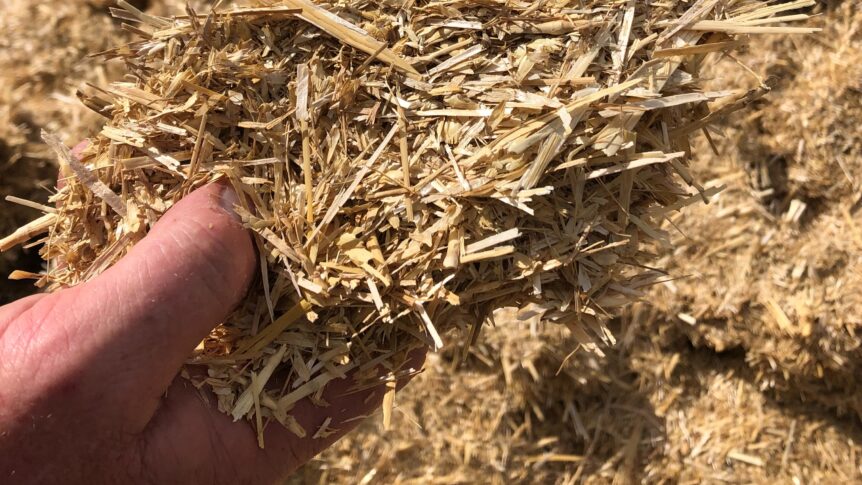Author: Gabby Brooke, Livestock Nutritionist, Alltech Lienert Australia
There is no silver bullet to tackle the threat of mycotoxins. To reduce the risk to both animal health and business profitability, a targeted approach is needed, consisting of different tools to evaluate the mycotoxin risk.
Effects of Mycotoxins on Livestock Production
Mycotoxins are naturally occurring toxic compounds that can cause a variety of adverse health effects to your livestock. The three most commonly seen mycotoxins in livestock production are Aflatoxin (Afla), Zearalenone (Zea) and Deoxynivalenol (DON).
Aflatoxins are notably the most common mycotoxin in Australia. While young animals are most susceptible to the effects of aflatoxins, all ages can be affected. In all livestock species, aflatoxins cause liver damage, gastrointestinal dysfunction, reduced productivity, decreased feed utilisation and efficiency, decreased reproductive performance, reduced milk or egg production, embryonic death, birth defects, tumours and suppressed immune system function.
Zearalenone mimics the effects of the female hormone, oestrogen. At high concentrations, it can interfere with ovulation, conception, pregnancy implantation and foetal development. In pregnant animals, it can increase the risk of abortions and still births. Enlarged swollen red vulvas and possible irregular heats have been seen in pigs and ruminant animals.
Deoxynivalenol can cause acute nausea resulting feed refusal, causing reduced growth rates, diarrhoea and digestive dysfunction (e.g gastroenteritis).
To combat the threat of these mycotoxins, Alltech Lienert has a mycotoxin management toolbox, focussing on the preservation of feed and raw materials, as well as helping to monitor contamination levels and help protect your livestock.
Before harvest – CLEAN UP!
Using up old grain and silo cleaning before new grain is important. It is never a good idea to load the new crop on to old grain in the silo. Clean all silos before harvest and burn or bury any grain residues.
A systematic cleaning schedule should be planned to ensure the bulk bins/silos are cleaned and decontaminated on a regular basis. This will also eliminate the risk of bacterial and fungal contamination inside these bins. Grain stores must be maintained in a serviceable and watertight condition. Inspect the walls and hatches and repair any structural damage or faults that could let water penetrate. Water will activate the living components of the grain mass and may cause moulding and sprouting. Mouldy grains are unacceptable for feed or milling purposes. Fungal contamination implies not only a reduction in nutritional quality but also the potential for contamination with mycotoxins. Similarly, hay and straw that has had exposure to rain, can lead to a higher incidence of fungal spores, increasing the risk of mycotoxins.
Grain treatment for storage
Tackle the cause of the problem with a preservative which inhibits the mould growth and lowers the risk of mycotoxins. While crops are growing, mould presence is hard to control and highly variable due to seasonal weather conditions. Alltech’s Mold-Zap® is a powerful mould inhibitor, comprised of buffered propionic acid and is blended into animal feed and stored grain. The propionic acid in Mold-Zap is buffered with ammonia through a process that yields ammonium dipropionate, resulting in a lower pungency.
Testing Programs
It is important to do routine mycotoxin tests to evaluate their prevalence in your feed. Alltech Lienert has a service to help maintain feed quality and safety. We can offer routine mycotoxin analysis, using Alltech Rapiread™, which can determine the level of the three key mycotoxins Afla, DON and Zea. A more in-depth evaluation can be undertaken using the Alltech 37+ system where over 37 mycotoxins can be tested. These tests provide an insight into the presence and levels of mycotoxins as a possible reason for on farm production issues.
Mixed Feed
Protect the animal with a mycotoxin binder. A binder consists of absorbent ingredients ensuring a broad-spectrum binding efficacy. Not all toxin binders are created equal. It is important to select a binder that will cover a range of toxins including Zearalenone which can have substantial reproductive effects, as mentioned above. It is also prudent to select a binder that has minimal negative interactions with diet ingredients which are required for the animal’s growth, reproduction and maintenance. Alltech’s Mycosorb® A+ is the next generation of mycotoxin binders. Mycosorb A+ includes a carbohydrate network from a specific yeast cell wall, plus a specific heterotrophic algae. A proven broad spectrum mycotoxin binder, which tackles mycotoxin challenges as a whole, rather than dealing with individual mycotoxins. Alltech’s continued drive for product and research development has identified this new approach to mycotoxin binding. This has helped determine the precise ingredients needed to expand the binding capabilities of Mycosorb A+.
Prevention is key for optimum health
Whilst individual mycotoxins present a threat, the synergistic effects of multiple occurring mycotoxins and their interactions become very critical to the health of your livestock. Prevention of such a mycotoxin challenge is key for the optimum health of your livestock and the long-term profitability of your operation. Alltech Lienert offers tailor-made mycotoxin management programs to assist you with prevention and mitigation of mycotoxin challenges and incorporates the product and management solutions discussed above.
Contact your local Alltech Lienert nutritionist or representative or call 1800 649 231 for more information on how we can help ease your mycotoxin worries!

